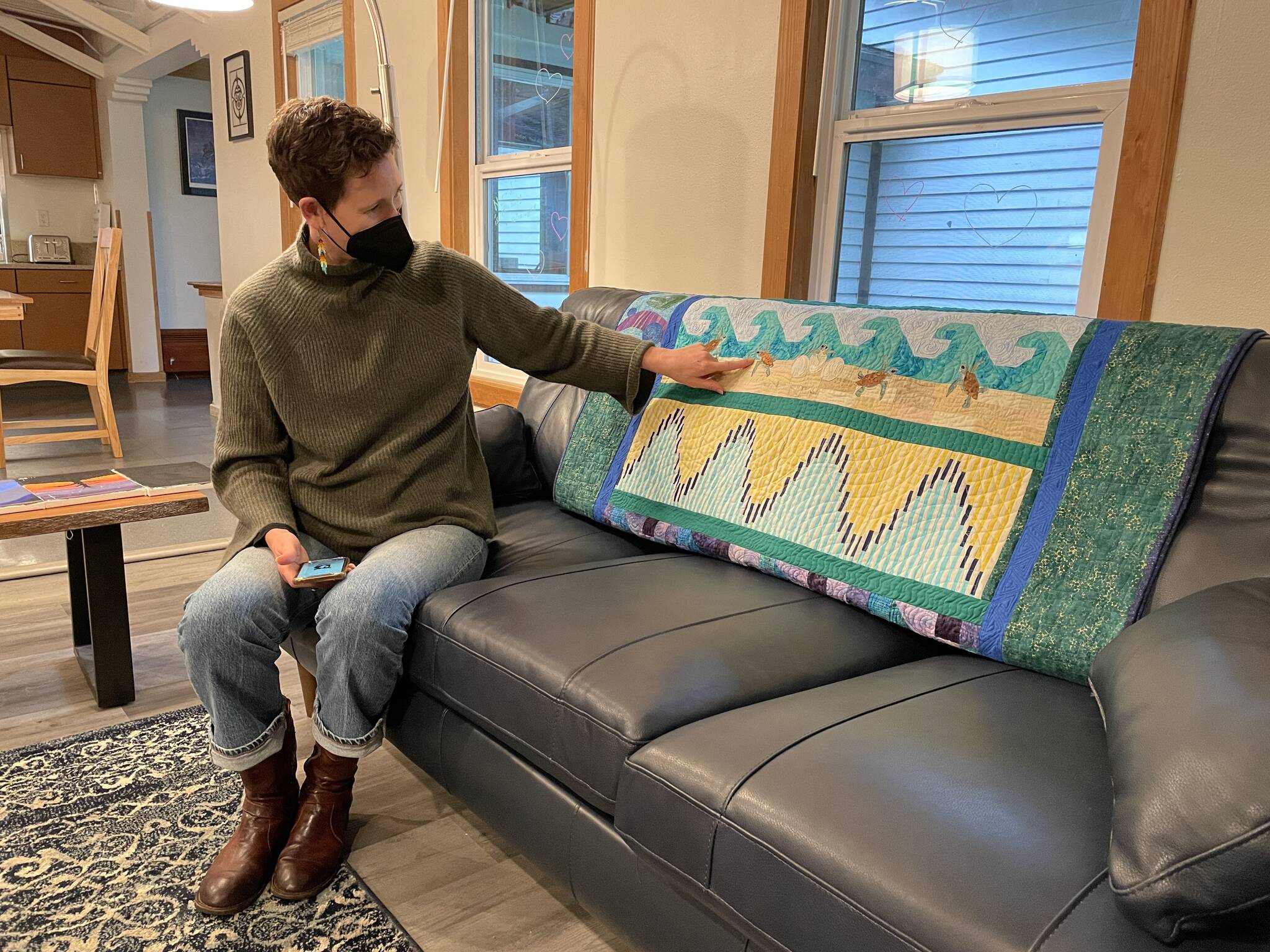An earlier version of this story misspelled Jorden Nigro’s name. It has been corrected.
Named for the spruce trees that cling stubbornly to the mountainsides, Shéiyi X̱aat Hít, or Spruce Root House, is Juneau’s new youth shelter, and it is now fully up and running.
The shelter for runaway and homeless youths is a joint venture between the Zach Gordon Youth Center and the Tlingit and Haida Regional Housing Authority.
“There hasn’t been a youth shelter in Juneau for a couple years and Juneau’s never had a rapid rehousing program for youth,” said Jorden Nigro, manager of the ZGYC, in an interview.
While the ZGYC focuses on programming and working with the youth using the shelter, THRHA is responsible for the structure itself, said Jackie Pata, president and CEO of the THRHA.
[Murkowski enters bill to exempt Alaska from Passenger Vessel Services Act]
“By tying together the housing services with the supportive services, we’ve seen more success happen,” Pata said in an interview. “Nationwide, they’re exploring: What is youth homelessness and how do we fix it?”
The partnership established Shéiyi X̱aat Hít in the vacated building that formerly held Juneau’s old youth shelter. Planning began about two years ago?, Pata said, as they applied for grants and other funding from the Department of Housing and Urban Development.
The name was suggested by X’unei Lance Twitchell and adopted by youths it serves, Nigro said.
Now, the city leases the property to the THRHA, the THRHA maintains the property and the ZGYC staff and provides programming for the shelter. Grants and funding from many other organizations, including local sources, such as the Juneau Community Foundation; state-level, such as the Alaska Mental Health Trust; and federal, like HUD, help to pay staff and for the facility.
“We started looking at what was available,” Pata said. “We heard that this home was back open. We said, ‘Gosh, this would just be perfect.’”
The building’s infrastructure needed considerable updating, Nigro said, from the floors to the boiler to the plumbing to the fire systems. With that and more accomplished, the shelter underwent a soft open in July as the nine staff at the shelter and Nigro herself trained up and got things running smoothly.
“I think overall it’s been really smooth,” Nigro said. “Which is a credit to all the staff that work here.”
The opening ends a period of about two years where Juneau didn’t have a shelter at all, Nigro said. During that time, youths who needed to find somewhere to live would often come to the ZGYC, Nigro said, where the staff there would try to find anyone they knew able to take the kids in and keep them from having to live in a dangerous situation.
“It was definitely a challenge,” Nigro said. “We definitely saw kids staying places where it was unsafe for them to be, but we didn’t have a lot we could offer.”
Now, Nigro said, the shelter is up and running. It has six rooms for kids aged 10-17, as well as integrated staff and office space to help the youth make their next moves or reconcile the circumstances that brought them to the shelter.
“We can have six kids to one staff. We mostly have two staff on,” Nigro said. “The staff spends time with the kids working on their exit plan. Where’s the next step? Where do you go after this?”
The staff also work with other organizations helping kids out so that they can coordinate their assistance, Nigro said, making sure everyone’s pulling in the same direction. The shelter also offers rapid rehousing, a transitional program for young adults 18-20. Without the partnership with THRHA, Nigro said, none of what they’ve accomplished would be possible.
“This project would not have happened without the housing authority being so supportive. The Housing Authority really threw themselves into this,” Nigro said. “It’s pretty great to have a partnership between city government and tribal government in this way.”
Now that the shelter is open, Nigro said, they’re working to get the word out to those that need it that there’s a safe place for youth that need it to go 24/7.
“You can feel it when you’re in the space. I think the kids can feel it too,” Nigro said. “It feels to me like there’s something special happening in this program.”
Looking forward, Pata said, they’re looking at replacing the roof for the house, which is more than 50 years old. Replacing the roof of the house, which was built in different stages, will be an expensive undertaking and THRHA is currently searching for grants. With the tangled roots of the spruce tree as their guide, Pata said, they hope the house will be there as a resource for Juneau’s youth for years to come.
“We’re all interconnected in some way,” Pata said. “That connection is how we support our communities and support ourselves.”
• Contact reporter Michael S. Lockett at (757) 621-1197 or mlockett@juneauempire.com.

